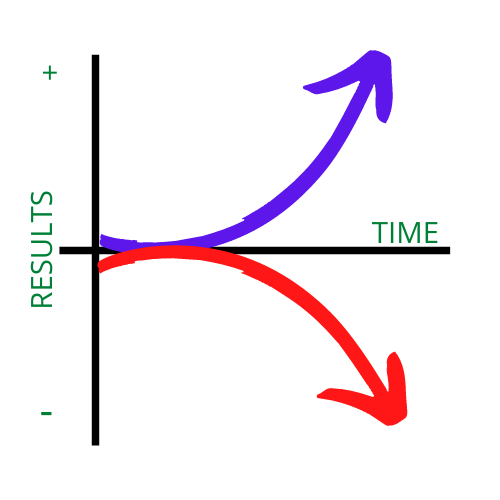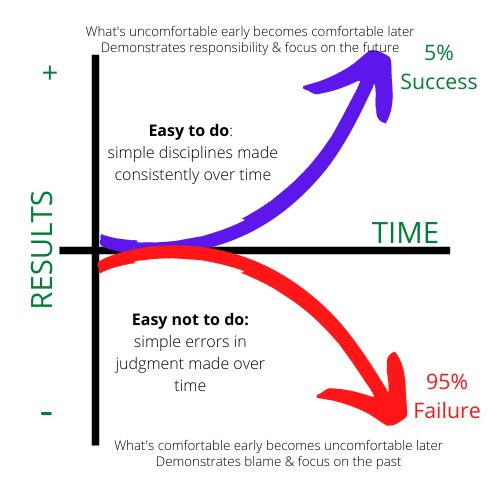Over the past little while, I’ve been trying to build up a few habits that will help me move forward in my business. I know change takes time and consistent effort, so I’m not expecting miracles. We all know the stories about the “overnight successes”…those people who suddenly get famous for whatever it is they do. What we don’t see most of the time are the 10+ years of hard work, failures, and sacrifices that have come before that “overnight success”.
There are so many books dedicated to the idea that big results come from little changes. Darren Hardy talks about it in his book The Compound Effect; Jeff Olson describes it in The Slight Edge; and James Clear writes about it in Atomic Habits. I recommend all of these, if you haven’t read them. I don’t know who came up with the idea first…I suppose I could go and see which book was published first, but I’ll leave that for you to do, if you’re interested!
The overarching theme of The Compound Effect is that each day you make choices that are seemingly small and insignificant. They don’t really have any impact on your life. But as each day progresses, the choices that you make act on each other and all of these individually insignificant choices lead to incredible results, and the results can be positive or negative, depending on the actions you chose each day. When you look back over time, you’ll see that your results are either taking you in an overall positive direction or a negative one. Nothing happens overnight; if you want to see positive results, small positive changes each day are what you need to be making.

The Slight Edge follows a similar premise; however the author takes it a bit further by saying that the choices we make each day – those seemingly insignificant decisions – are either easy to do or easy not to do and it’s our decision whether or not to do them that puts us on the upward or downward arc of the path as time goes on. He continues the theme by showing that the little actions that are uncomfortable at the beginning (easy not to do – like exercising every morning, for example) become increasingly easy to do as time goes on, if you continue to do them. What is uncomfortable in the beginning becomes comfortable over time. Similarly, the little actions that are easy to do at the beginning (like spending the evening watching Netflix every night) result in more difficult situations later on. What is comfortable in the beginning becomes uncomfortable over time. The theme of this book is that your philosophy feeds into your attitude, which then leads to the actions you choose. The results you get from those actions lead to your lifestyle…all parts of it: finances, health, relationships, personal development and business. And these either continue along the upward curve or the downward curve, depending on the simple choices you make each day.

The theme running through Atomic Habits is similar again. Here, the gist of the book is that you want to make simple behaviours become habits. A tiny change in your behaviour isn’t going to revolutionize your life overnight; however, when you repeat that tiny change until it becomes a habit, you will start to see bigger changes in your life. If you continue to perform those actions every day, it absolutely can lead to big changes. Changing your life is not about making big breakthroughs or revolutionizing your entire life in one fell swoop. It’s about consistently taking the small positive steps over time. The secret in this book is that repetition results in automaticity; the more times you repeat an action, the more automatic it becomes…to the point where it is an unconscious act (a habit) and further repetition doesn’t make it “more automatic”. That means at a certain point x there is no longer any change in y regardless of the amount of x that’s added. This would be the Habit Line, where you finally reach a point in repetitions (x) that results in no further change in automaticity (y) because the action is now a habit.

What I really liked about Atomic Habits is the idea that there are just four simple steps to creating a good habit:
- Make it Obvious
- Make it Attractive
- Make it Easy
- Make it Satisfying
And the corollary of those four simple steps will lead to breaking a bad habit:
- Make it Invisible
- Make it Unattractive
- Make it Difficult
- Make it Unsatisfying
I haven’t done the books justice with this little review; you really should take the time to read them.
I’m sure there are a lot of other books on the power of small changes and the importance of making habits. Let me know if you’ve read a good one!


